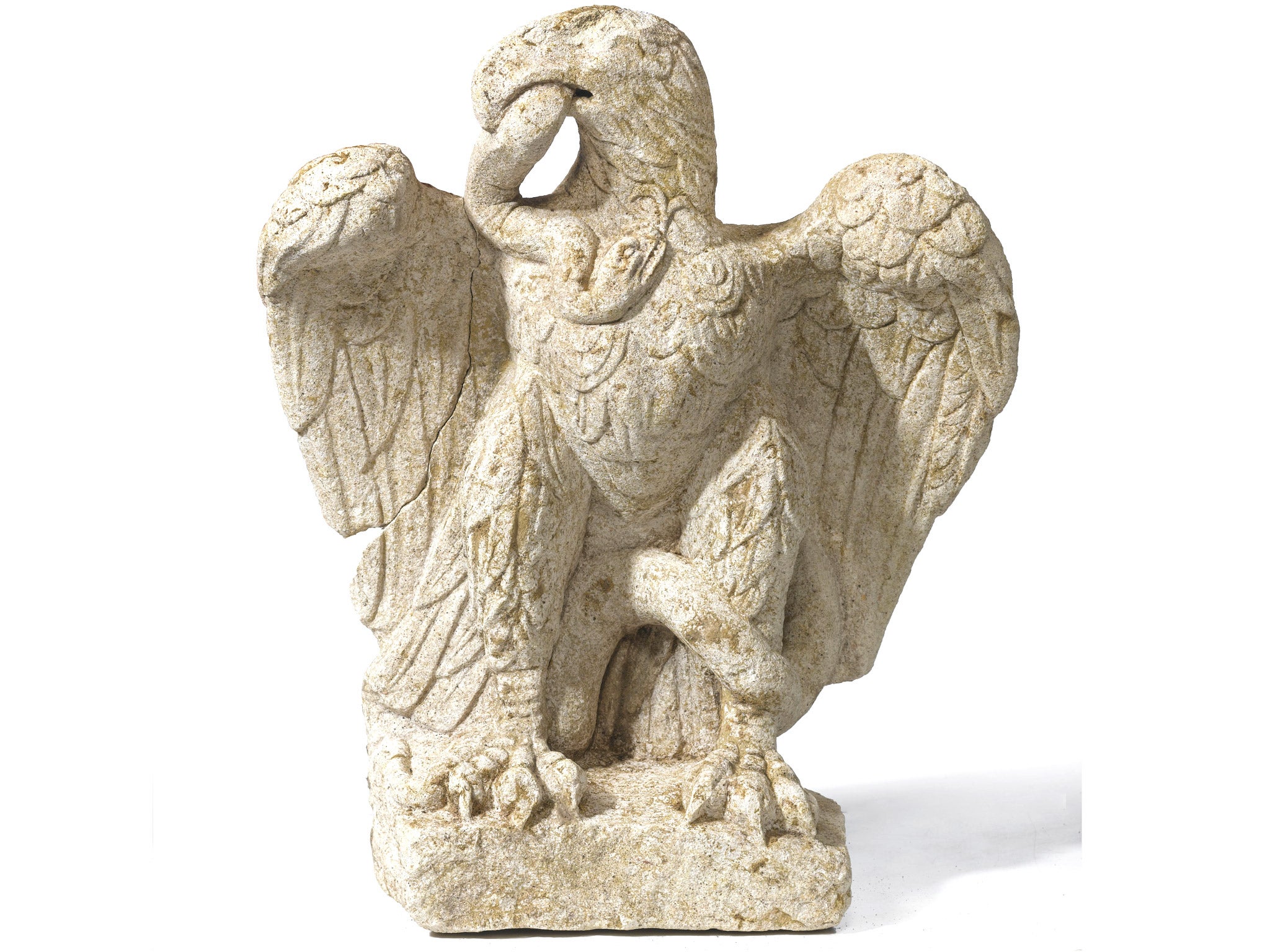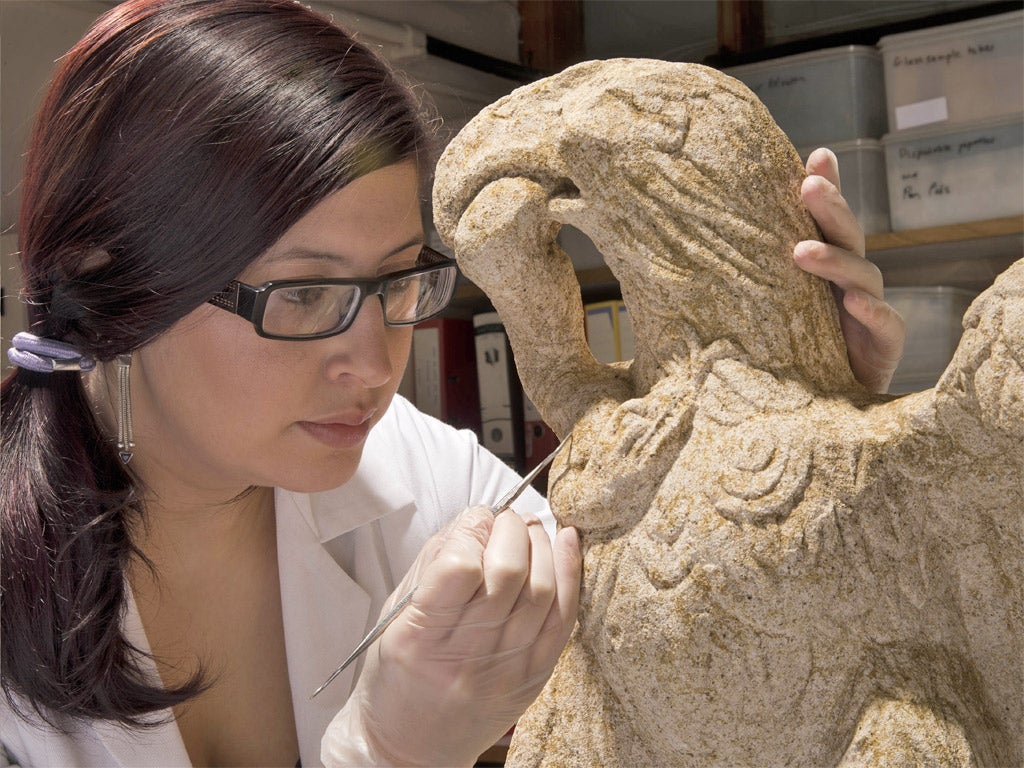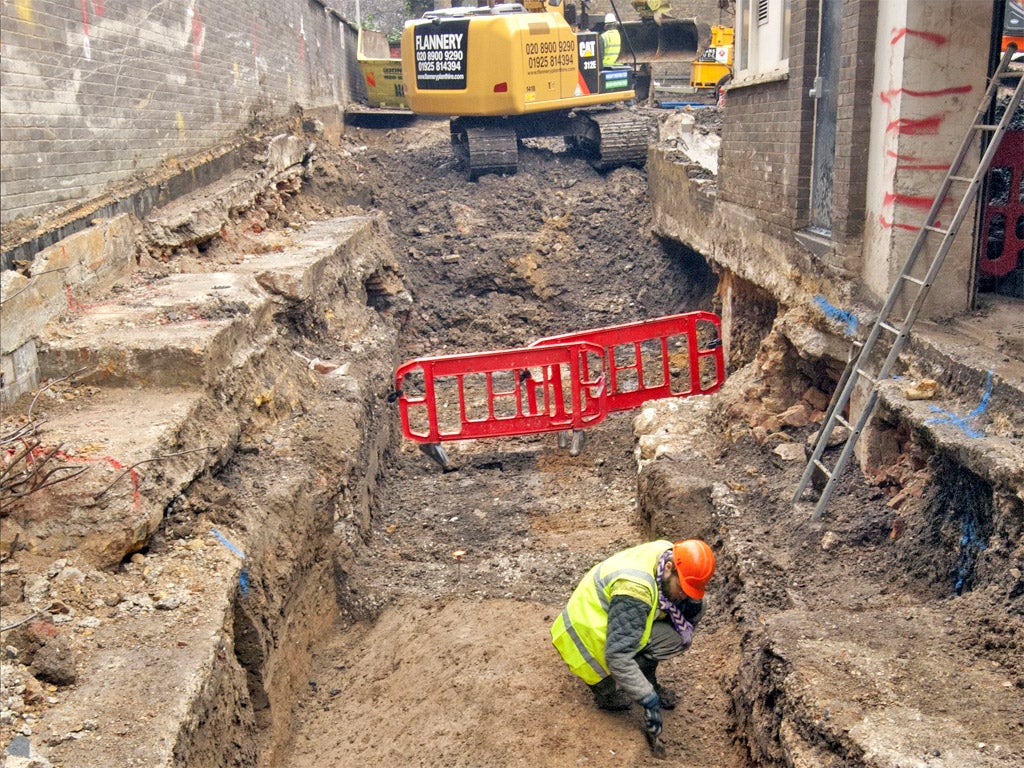Roman eagle rises again in London after 2,000 years
Sculpture probably adorned the tomb of an important figure

Your support helps us to tell the story
From reproductive rights to climate change to Big Tech, The Independent is on the ground when the story is developing. Whether it's investigating the financials of Elon Musk's pro-Trump PAC or producing our latest documentary, 'The A Word', which shines a light on the American women fighting for reproductive rights, we know how important it is to parse out the facts from the messaging.
At such a critical moment in US history, we need reporters on the ground. Your donation allows us to keep sending journalists to speak to both sides of the story.
The Independent is trusted by Americans across the entire political spectrum. And unlike many other quality news outlets, we choose not to lock Americans out of our reporting and analysis with paywalls. We believe quality journalism should be available to everyone, paid for by those who can afford it.
Your support makes all the difference.Archaeologists in London have discovered the finest Romano-British sculpture ever unearthed in the capital. The spectacular 65 centimetre tall sculpture of a Roman eagle with a snake in its beak was found at the bottom of an ancient Roman ditch just south of Aldgate station in the eastern part of the City - and will go on show at the Museum of London from Wednesday.
Originally, the eagle had almost certainly adorned either the interior or the roof of a grandiose tomb belonging to a prosperous and very important early Londoner who died in the late first or second century AD.
He must have been of substantial status and influence - because he had acquired a burial plot immediately by the side of one of the main roads leading out of London, some 50 metres outside the probable city boundary.
Indeed it is likely that the Roman city authorities gave him the honour of being buried on public land. That would suggest that he had been a senior political figure in Roman London - potentially one of the 'joint mayors' (the 'magistrates' who were appointed by the local city council to run the city's finances, oversee religious matters and act as judges).
The 'eagle and snake' imagery is likely to have reflected the man's powerful position in life. The eagle - a Roman symbol of power is seen in the sculpture fighting a snake, sometimes perceived in the Roman world as representing danger and the powers of the underworld.
The eagle's presence on or in the tomb may have therefore also been seen as protecting the structure and the prominent Roman interred within it.
But it is the demise of that grandiose mausoleum-style tomb and the deposition of the eagle in a road-side ditch that may prove to be of greatest historical significance. For the archaeologists also found the foundations of the probable mausoleum - and it appears that the substantial six metre square structure had been deliberately demolished, but not to provide space for the construction of other buildings. Rather it appears to have been knocked down for some other reason.
The evidence so far suggests that it was probably demolished by the late second century AD - potentially around the time that the city authorities decided to construct a defensive wall around London. It's conceivable that the mausoleum was deliberately knocked down at that time because it was too near the intended course of the city wall and might therefore have offered cover to potential enemies who might wish to attack the city.

It is also possible that the masonry from the mausoleum was used in the actual building of the wall when its construction began in the late second century.
Powerful protective figure the eagle might have been - but, not being a useful masonry block, it was therefore the wrong shape to help build the city wall and defend London. It's therefore perhaps courtesy of its unsuitability for that more practical protective role that led to it being flung into a ditch, an act which preserved the sculpture for 1800 years.
The limestone sculpture itself was originally made either in the Cotswolds or in London by a member of a group of Romano-British sculptors associated with what is now the Gloucestershire area. In Britain, the only other similar known image of an eagle with a snake is a sculpture from a Roman villa in Somerset. However, elsewhere in the Roman Empire, the motif is relatively common and was inherited from an ancient Greek prototype.

The excavation team - from Museum of London Archaeology - found the eagle on the final day of an eight month long dig in the Minories near Aldgate. It's one of the most important archaeological finds ever unearthed in London. The excavation - directed by archaeologist Simon Davis - was carried out in preparation for the construction of a hotel on the site.
Roman art specialist Professor Martin Henig of Oxford University's Institute of Archaeology said: “The sculpture is of exceptional quality, the finest sculpture by a Romano-British artist ever found in London and amongst the very best statues surviving from Roman Britain. It's condition is extraordinary.”
Join our commenting forum
Join thought-provoking conversations, follow other Independent readers and see their replies
Comments